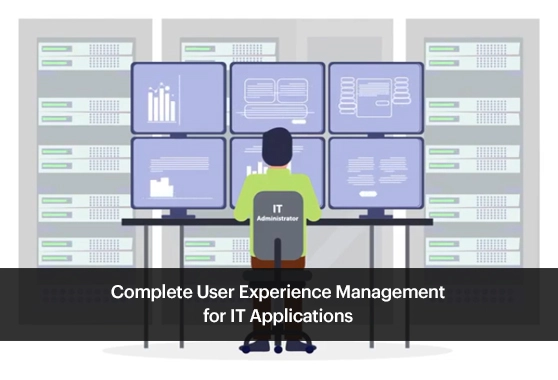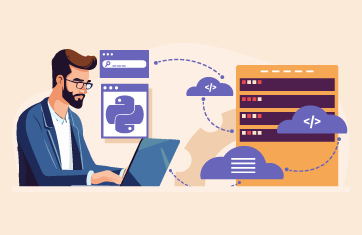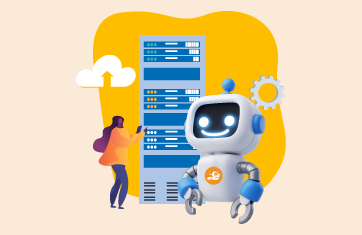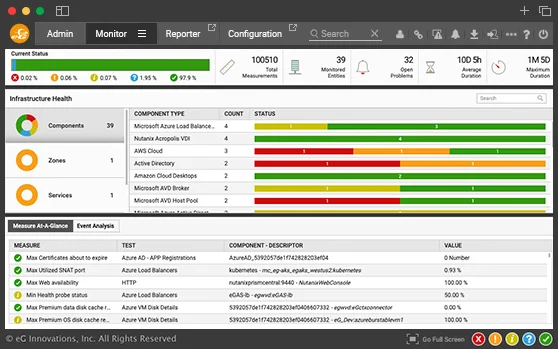Moodle application monitoring with
eG Enterprise
Ensure peak performance for Moodle based applications. Ensure high availability and great user learning experience when delivering critical educational and training services.
Free TrialMoodle monitoring matters
Many educational institutions have built their course delivery around the Moodle platform. It is now a core service critical to delivering on their commitments to students. With a general trend towards online learning resources and pandemic-accelerated remote learning programs, it has become increasingly important for educational institutions to ensure high availability and great user experience. Successful institutions need to meet increasing expectations from students as well as explore new opportunities to expand their offerings to satellite campuses and students studying remotely.

Schools and higher educational establishments needed performant access to Moodle but also the ability to collect data continually on the services they deliver. It is now essential to track KPIs (Key Performance Indicators) to demonstrate whether educational institutions are continually meeting their commitments to student services and great educational outcomes.
Key challenges in monitoring Moodle
Moodle is one of many components of the online education system of an educational institution.
There are usually a number of other systems Moodle interacts with, including:
- An authentication/identity provider (e.g., Active Directory or LDAP) to control user accounts
- A student information system (SIS) is a database of all students, which programs what courses they are studying
- A document repository (e.g., Alfresco) to store files and track workflow as students and teachers collaborate
- An ePortfolio where students can assemble assets
- A reporting or analytics tool
Moodle is written in PHP and runs on web servers like Apache, Nginx, etc. It can be used with MySQL, MariaDB, PostgreSQL, Microsoft SQL Server or Oracle, database servers.
The end user experience when using Moodle also depends on the hardware, networking and operating system / virtualization stack, as well as the end-users' client devices and the network between them and the Moodle servers such as home Wi-Fi and the internet.
eG Enterprise’s comprehensive end-to-end monitoring solution monitors all of these interdependent infrastructure and application stacks and components at scale.
eG Enterprise: Providing end-to-end Moodle application monitoring
eG Enterprise is ideally suited to address the monitoring requirements of educational institutions that are reliant on Moodle applications. With eG Enterprise you get converged application and infrastructure monitoring from a single pane of glass:
- Perform synthetic monitoring of Moodle applications from different remote sites to benchmark user experience and identify any abnormal changes.
- Implement real user monitoring to track actual user activity and identify slow pages, slow locations, etc., proactively.
- Monitor the health of all the underlying infrastructure tiers – the network, the web servers, database, storage devices, etc.
- Get code-level visibility and distributed transaction tracing on request processing by Moodle applications, to determine where bottlenecks might lie.
- Automated correlation for root-cause identification and analytics for trending and capacity planning.
Synthetic monitoring of Moodle performance
The eG Enterprise Web Application Simulator enables different Moodle workflows to be recorded and played back. The workflows configured simulate sequences of user actions. The simulator begins with login in and then performs a number of common tasks such as registering for classes and accessing content. Synthetic monitors can be set up from different geographic locations, including on campus, satellite campuses, and remotely from both local and out-of-state locations.
Simple color-coded overlays indicate the health of each step of the workflow. When errors or slowdowns occur, components will turn red, and alerts are triggered.
This synthetic monitor continually simulates real users accessing applications, even at times of the day or night when there may be no real users accessing systems. Failures can, therefore, be detected before real users are affected, and the corresponding services can be repaired before students are affected and IT help desk tickets avoided.
Real User Monitoring of Moodle applications
Using JavaScript injection, eG Enterprise monitors the real experience of users when they access Moodle applications. The monitors detect page load time, JavaScript errors, slowness of specific URLs, or from specific locations, and steps taken to mediate the issue.
Real User Monitoring (RUM) tracks all web pages and all accesses to complement Synthetic Monitoring. This monitoring approach exploits the fact that today’s web browsers have extensive instrumentation built-in and collect very detailed information about each page visit by a user.
If students or staff encounter issues and raise support tickets with the IT help desk, RUM ensures that the data for each and every login is available to diagnose and resolve issues rapidly ensuring vital education continues.
RUM captures the data you need to understand Moodle users, their web and mobile client-side experiences and future needs. With eG Enterprise you can understand how students and staff access key applications: the browsers they use, the devices and endpoints they use and where geographically users login from.
PHP application monitoring
PHP application transaction tracing enables administrators to rapidly find performance bottlenecks within heterogeneous application environments.
eG Enterprise traces all user requests. Slow requests and details of transaction processing for these requests are collected for further analysis:
Web server monitoring
eG Enterprise esures that the webservers front-ending Moodle applications are continuously monitored. eG Enterprise provides insights into request processing by the web servers, using the webserver APIs. Common questions that can be answered using these metrics include:
eG Enterprise also processes web server logs to record performance per website accessed. Since requests to the webserver may be for non-PHP pages as well (HTML, images, etc.), the results of this test indicate if there is an issue serving content to users. With the metrics collected with this approach, IT admins can determine if users are seeing many errors.
Support is available for many popular web server technologies including Apache, Microsoft IIS and Nginx, see: Web Server Monitoring & Performance Monitoring Tools
Converged application and infrastructure monitoring with
eG Enterprise
With eG Enterprise, IT admins can monitor the underlying infrastructure tiers – network, storage, virtualization, cloud, etc. from the same unified web console. Any infrastructure slowdown, affecting the Moodle application stack can be identified with this end-to-end view of the infrastructure.
Color-coded service topology maps make it simple to visualize a Moodle application deployment. Drilldowns are available for each tier so the correct domain IT administrator can take ownership and have access to real-time and historical performance metrics, ensuring issues are rapidly resolved.

eG Enterprise for educational institutions
Leading educational institutions around the world are using eG Enterprise to monitor the performance and availability of key applications such as Moodle, Blackboard, and Peoplesoft. Beyond, this eG Enterprise also supports monitoring for a wide range of general enterprise applications such as SAP, Microsoft O365 (Exchange, SharePoint, Teams) and more.
Many universities also widely use remote access technologies like Citrix and VMware Horizon. eG Enterprise has specialized capabilities for digital workspace technologies.
Proactive IT monitoring is a strategic investment for an educational institution that results in IT efficiencies and improved student and staff satisfaction and overall better educational outcomes. You can learn more about eG Enterprise’s support for Education and our customer case studies on our Education Solutions pages.

To learn more about how eG Enterprise can help your institution, contact us or start your free trial today.















